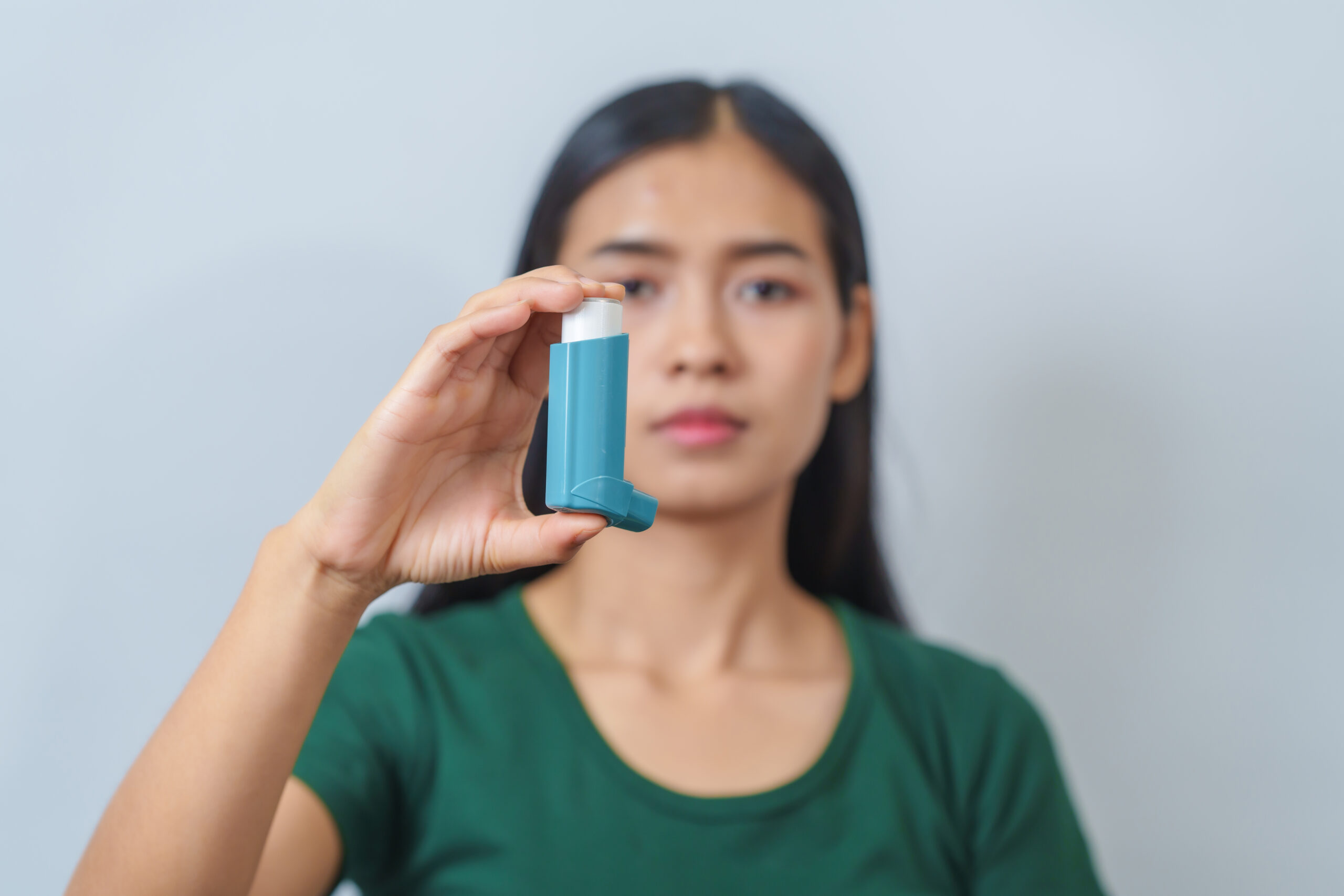The change of seasons can be beautiful, but for people with asthma, it can also bring on new challenges. As temperatures drop and the air grows crisp, allergens and irritants shift, triggering symptoms that can make breathing more difficult. Sneezing, wheezing, coughing, and chest tightness can start to creep back in, just when you thought your asthma was under control.
At Kratz Allergy & Asthma, we understand how seasonal transitions can affect your breathing. Whether you’re spending time outdoors enjoying the cooler weather or cozying up indoors, it’s important to stay proactive about managing your asthma. Small lifestyle changes, combined with the right treatment plan, can go a long way toward helping you breathe easier all season long.
Know What Triggers Your Asthma
One of the most effective ways to manage asthma is to identify and avoid your personal triggers. Every person’s asthma is unique, and what irritates one person may not affect another. Common fall triggers can include things like pollen, mold, and even changes in air temperature.
Take note of what seems to set off your symptoms. Do you start coughing when you rake leaves or spend time outdoors? Does your chest tighten when the air gets dry? Knowing the patterns can help you plan ahead and limit exposure.
Common Triggers to Watch For
- Ragweed pollen: This late-season allergen peaks in the fall and can linger even after the first cold front.
- Mold spores: Wet leaves and decaying plants are breeding grounds for mold, which can easily become airborne.
- Cool, dry air: The shift from humid summer air to crisp fall air can irritate airways and cause flare-ups.
- Indoor allergens: Dust mites, pet dander, and other irritants can build up indoors when windows are closed.
Keeping a symptom journal or using a weather and pollen tracking app can help you recognize patterns and adjust your environment accordingly.
Keep Your Home a Safe Breathing Zone
As you spend more time indoors during the fall, your home environment becomes even more important. A clean, allergen-free space can make a big difference in how you feel. Start by giving your home a deep clean at the start of the season. Vacuum carpets and upholstery, wash bedding in hot water, and clean vents and air filters. An air purifier with a HEPA filter can also help trap airborne allergens.
Tips for a Healthier Home Environment
- Replace HVAC filters regularly: Change filters every 30 to 60 days, especially during high-allergy seasons.
- Control humidity: Keep indoor humidity between 30% and 50% to discourage mold growth.
- Avoid strong scents: Air fresheners, candles, and cleaning sprays can trigger symptoms for sensitive individuals.
- Keep windows closed: This prevents pollen and mold spores from entering your home.
These small adjustments can create a cleaner, safer breathing environment that reduces your risk of flare-ups.
Stay Consistent With Your Medications
Even when symptoms seem mild, skipping your asthma medication can lead to flare-ups later on. Consistency is key. Your maintenance or “controller” inhaler is designed to keep inflammation in check, while your quick-relief inhaler helps manage sudden symptoms. If you’ve noticed your asthma worsening during the fall, it may be time to review your treatment plan. Seasonal changes often require small adjustments to keep symptoms under control. At Kratz Allergy & Asthma, we work closely with each patient to ensure their plan fits their lifestyle and current needs. Whether you need a medication adjustment, an updated inhaler technique, or an allergy evaluation, our team is here to help.
Watch Out for Fall Allergens
Fall allergies and asthma often go hand in hand. In Florida, especially in areas like Spring Hill, Port Richey, and Odessa, pollen and mold can remain active well into the cooler months. Managing these allergens can help reduce the severity and frequency of asthma symptoms.
How to Minimize Allergen Exposure
- Shower after outdoor activities: This helps remove pollen and mold from your skin and hair.
- Change clothes when you come inside: Don’t track allergens around the house.
- Use a HEPA vacuum: These models can trap fine particles that trigger asthma.
- Keep pets clean: Regular grooming helps reduce dander and pollen they might carry indoors.
If allergies are making your asthma worse, allergy testing can help pinpoint what’s causing your symptoms so you can take targeted action.
Pay Attention to the Weather
Cooler air feels refreshing, but it can also tighten airways for people with asthma. Cold, dry air causes the bronchial tubes to constrict, making it harder to breathe. Florida’s weather can fluctuate during the fall, meaning you might face humid mornings and brisk evenings all in one day. Before heading outside, check the temperature and air quality. On days when the air feels dry or the pollen count is high, try wearing a lightweight scarf or mask to help warm and humidify the air before it reaches your lungs.
Quick Tips for Outdoor Activities
- Warm up before exercise to help your lungs adjust gradually.
- Schedule workouts for later in the day when pollen counts are lower.
- Carry your rescue inhaler and know your personal warning signs.
With a few precautions, you can still enjoy outdoor walks, sports, and family time without worrying about sudden breathing issues.
Strengthen Your Lungs With Regular Activity
It may sound counterintuitive, but gentle exercise can actually help strengthen your lungs and improve asthma control. Physical activity increases lung capacity, enhances endurance, and reduces inflammation over time. Of course, it’s important to pace yourself and choose activities that work well for your body. Swimming, yoga, and walking are great low-impact options that don’t overly strain the lungs. If exercise tends to trigger symptoms, talk to your provider about pre-treatment options. Using an inhaler before activity may help prevent flare-ups and make movement more enjoyable.
Practice Good Breathing Habits
Breathing techniques can make a significant difference in asthma control. Many people don’t realize how shallow their breathing becomes during a flare-up, which can worsen symptoms. Learning to control your breath can calm your body and help open up your airways. Try incorporating breathing exercises like pursed-lip breathing or diaphragmatic breathing into your daily routine. These techniques help improve airflow and reduce shortness of breath during activity. For example:
- Pursed-lip breathing: Inhale through your nose for two seconds, then exhale slowly through pursed lips for four seconds.
- Diaphragmatic breathing: Focus on expanding your belly as you inhale deeply, allowing your diaphragm to do most of the work instead of your chest muscles.
Practicing these techniques a few minutes a day can help improve lung efficiency and overall comfort.
Stay Ahead of Fall Illnesses
Colds, respiratory infections, and other seasonal illnesses can easily trigger asthma symptoms. Because fall brings more indoor gatherings and cooler weather, it’s a good time to focus on prevention. Simple habits can go a long way in keeping your immune system strong:
- Wash your hands regularly to reduce exposure to germs.
- Stay hydrated to keep your airways moist and less irritated.
- Get plenty of rest so your body can fight off potential infections.
- Avoid close contact with people who are sick when possible.
If you do catch a cold or respiratory virus, keep a close eye on your symptoms. An infection can quickly worsen asthma, so don’t hesitate to seek care if you experience wheezing or difficulty breathing.
Make Sure Your Asthma Action Plan Is Up to Date
An asthma action plan is your personal roadmap for managing symptoms and knowing when to take action. It outlines your daily medications, what to do if symptoms worsen, and when to seek medical help. Many people go months or even years without updating their plan, but changes in weather, allergens, or medication availability can affect how well it works for you. At Kratz Allergy & Asthma, we recommend reviewing your plan at least once a year, especially before the start of a new season. We’ll help ensure your medications are current, your inhaler technique is correct, and your plan fits your current lifestyle.
Know When to Visit an Allergy & Asthma Specialist
If your asthma symptoms are getting worse despite your current treatment, it might be time to see a specialist. Many people don’t realize how much their quality of life can improve with a personalized management plan. Here are a few signs it’s time to schedule a visit:
- You’re using your rescue inhaler more than twice a week
- Nighttime symptoms are interrupting your sleep
- You feel limited in your daily activities
- Your symptoms worsen during certain times of year
Our team at Kratz Allergy & Asthma offers advanced testing, personalized treatment plans, and ongoing support to help you breathe easier year-round.
Convenient Locations for Care in Spring Hill, Port Richey, and Odessa
Whether you’re near the coast or further inland, expert asthma care is never far away. Kratz Allergy & Asthma has convenient offices in Spring Hill, Port Richey, and Odessa, Florida, making it easy to get the help you need close to home. Our clinics are designed to make each visit comfortable, informative, and productive. We take the time to listen, answer questions, and develop a plan that helps you feel confident managing your asthma in every season.
Breathe Easier This Fall With Kratz Allergy & Asthma
Living with asthma doesn’t mean you have to sit out the season. With the right care, lifestyle adjustments, and professional guidance, you can enjoy everything fall has to offer without constantly worrying about your breathing. At Kratz Allergy & Asthma, we’re here to help you take control of your asthma, reduce your symptoms, and feel more confident in every breath. Our specialists provide personalized care for patients of all ages, offering testing, treatment, and education that empower you to live comfortably and actively.
Schedule your appointment today at one of our Spring Hill, Port Richey, or Odessa offices to create a customized asthma management plan designed around you.


